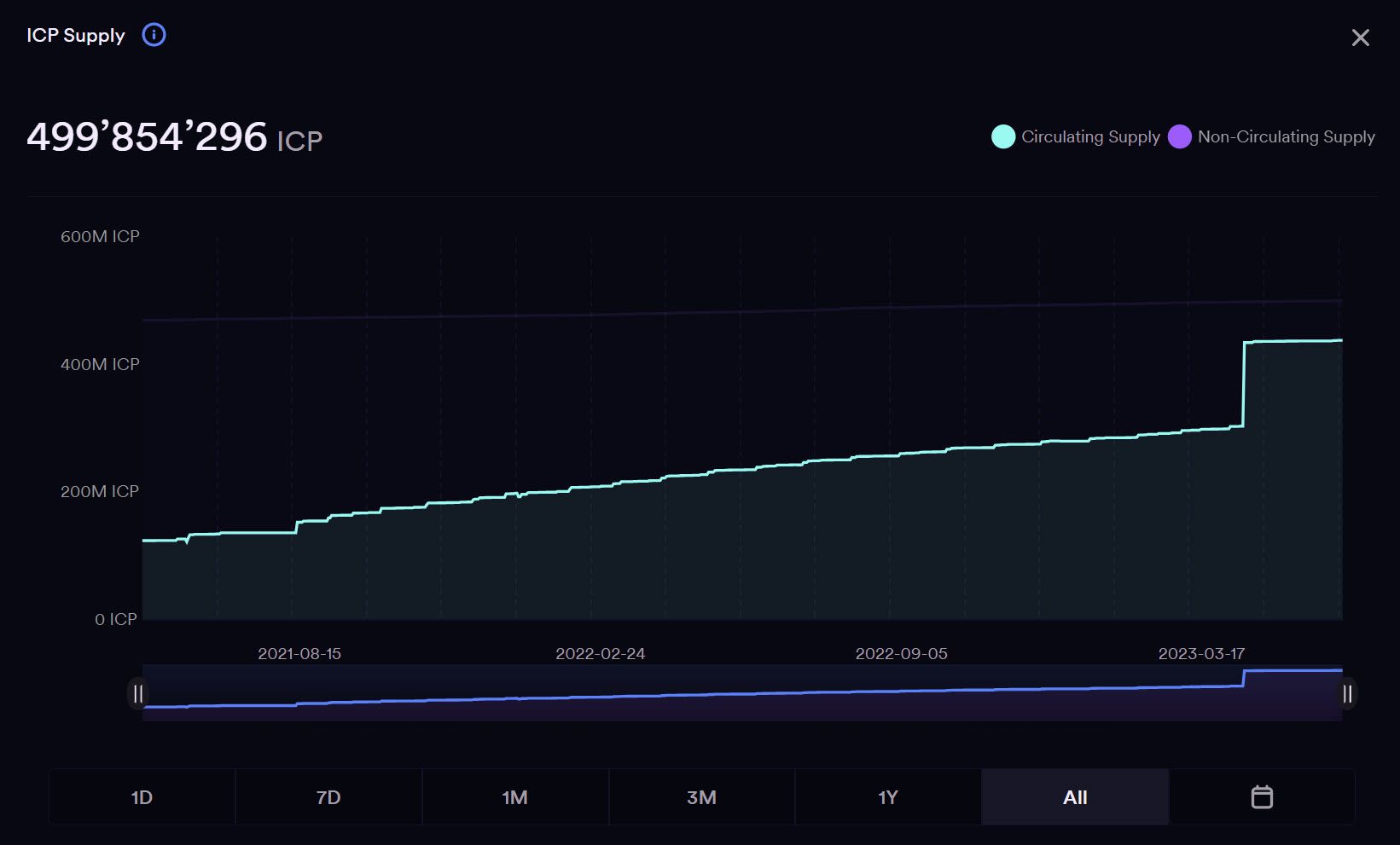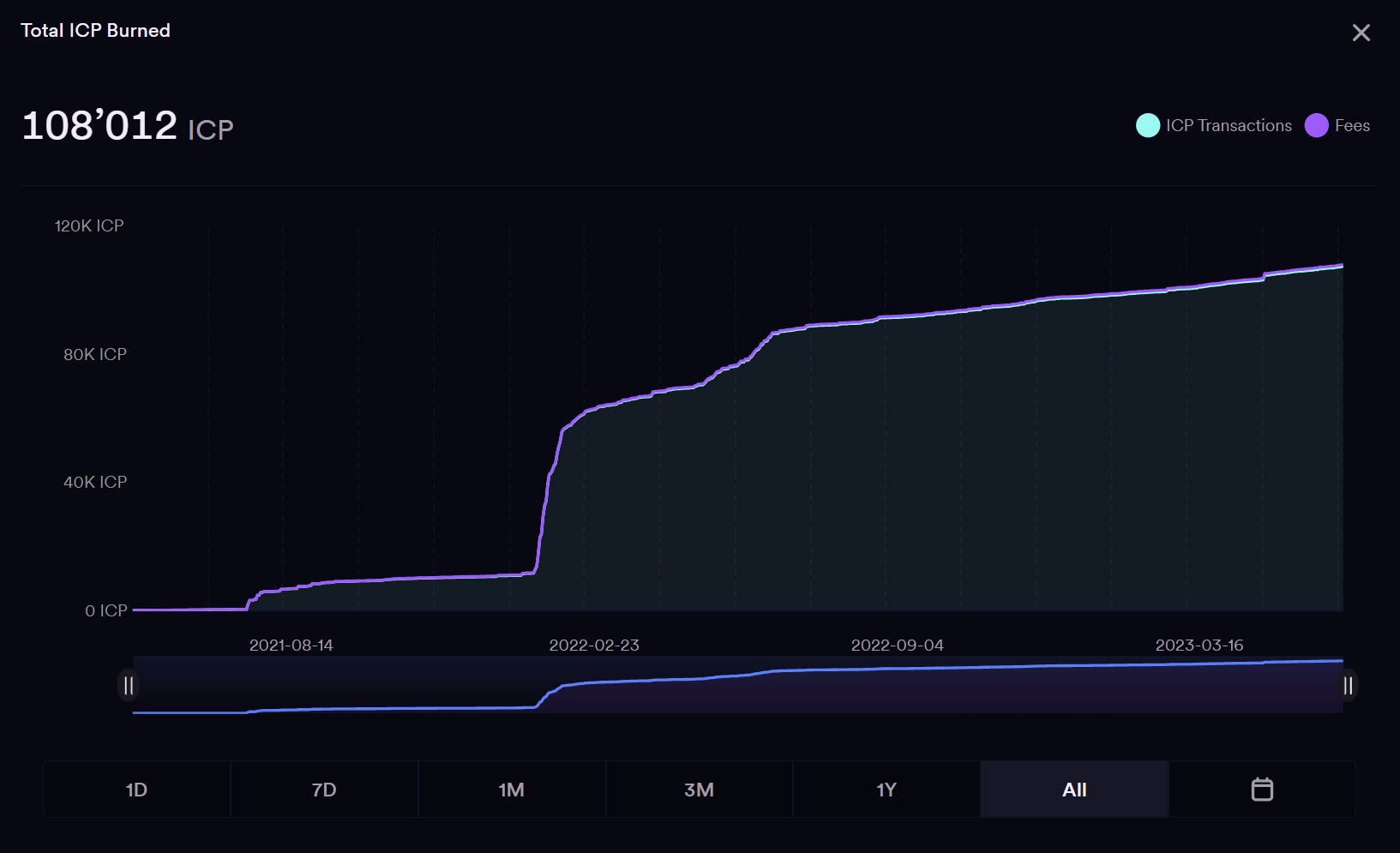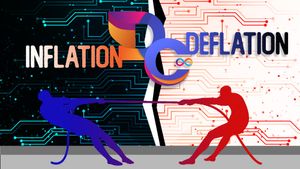ICP is the utility token of the Internet Computer Blockchain, which can be used for voting on proposals submitted to the NNS or converted into cycles. Cycles are fuel for smart contract canisters to perform computations and store data.
Currently, two direct inflationary mechanisms exist.
Since the NNS governs ICP, it can make changes to network economics as well. Therefore, the NNS can mint ICP and reward users for sustaining the network. All of these processes happen through canisters, which are the fundamental building blocks of the ICP Blockchain.
Owning ICP is not like owning a stock of Google or FB, its like owning the HTTP request to the open internet. Web 2.0 will eventually evolve into Web 3.0 and IC has the capability to be a decentralized cloud platform for smart contracts, opening endless possibilities.
Inflation happens in either of the following ways:
- Voting rewards - users earn rewards for staking
- Node Provider Rewards

Deflation happens when ICP is burned for computation
Voting Rewards
The NNS rewards ICP token holders when they participate in governance and vote on proposals.
Staking to govern
To participate in the governance of ICP, the token holders must create neurons by staking ICP. The minimum amount of ICP required to generate a neuron is one at the time of writing. When neurons are created, they can be locked from between 6 months to 8 years. The higher the locking period, the higher the voting power and subsequently the more voting rewards. The neuron will not start dissolving ( unlocking ) until the dissolving process is started. One can lock up to 8 years and dissolve after five years; therefore - they get their locked ICP after 13 years from the original time of locking.
Every day, the NNS calculates a fixed “neurons reward” according to a schedule, which it then divides among all eligible neurons according to their relative claims. For neurons that have participated in all votes, their relative claim derives proportionally from the number of ICP tokens locked inside and the dissolve delay remaining before the locked ICP tokens will be released (more marginally, it is also increased by the age of the neuron).
The crypto-economic game
This is where it gets interesting. The minimum duration of locking for a neuron to be eligible to vote on the proposal is six months. The ICP is only unlocked after the timer completes the dissolution of the neuron. Once the timer is set, it cannot be reversed. Therefore, the participants are involved in a crypto-economic game where they have to make decisions to get increased gains over a period of time.
The network self directs itself to govern through the NNS.
Neurons that have been configured with the maximum dissolve delay of 8 years are receiving up to 28.9% in annualized voting rewards (as of June 8, 2021).
When neurons vote on the proposals submitted to the NNS, they get maturity. When the maturity of a neuron reaches a threshold of spawning another Neuron, the neuron can be spawned and dissolved to obtain the ICP. This ICP can be compounded by topping up the existing neuron or traded in an exchange.
Node Provider Rewards
The NNS rewards the node providers for their service by minting and sending ICP to them.
Nodes machines perform computations.
Independent node providers host the nodes of ICP through independent data centers. The subnets hosted on nodes run canisters. ICP adopts a reverse gas model where the canisters (smart contracts) pay the fees for performing computation/data storage using cycles. The canisters use the processing power of dedicated node machines. The node machine hardware costs around $10,000 and therefore is not easy to run or maintain.
The cycles can be considered the processing cost of the special node machine hardware used by the canisters/smart contracts to perform computations.
For the service provided by the node providers, they are rewarded with ICP by the NNS.
NNS rewards node providers by tracking the statistics
NNS tracks the statistics and functioning of the nodes using the NNS canisters and rewards the appropriate amount of ICP.
Essentially nodes rewarded for "not statistically deviating". For example, since node hardware is standardized, a node should produce approx the same number of blocks as other nodes in its subnet blockchain. Fixed rewards for correct behavior. Slashing if bad deviator
— Dominic Williams ∞ (@dominic_w) July 13, 2021
This happens through the RewardNodeProvider (#NodeProviderRewards) proposal submitted to the NNS. The neurons vote on the proposal, and the ICP is sent to node providers, who then may liquidate it to compensate for their expenditure by selling ICPs in exchanges.
Max Supply and Inflation
How the supply of ICP increases
Currently, there is around a 471 Million total supply with about 136M circulating supply. There is no mention of a maximum circulating supply. The inflation rate starts at 10 percent in the beginning and adjusts to 5 percent over time.

Unlocking and Compounding cycle of Staking rewards
The node providers can also stake ICP by creating neurons, and locking their ICP by staking them.
When newly-minted ICP is compounded with the existing neuron, it locks the ICP but increases the rate of spawning new neurons. Both node providers and neuron owners who spawn ICP can compound their rewards further.
However, Dfinity expects 90% of ICP neurons to be locked, and compounding can make it happen faster. But when neurons with large amounts of ICP are unlocked, they may flood the market, and then the supply might drop again for a while as new buyers may create new neurons. Again there is no mention of the max cap; however, inflation is pegged at around 5% percent over the long term.
Cycles can be considered stable coins
When services are used in ICP, they are burned to mint cycles used to fuel the canisters or trade for stable coins, and 1 Trillion cycles are equivalent to 1 XDR. However, creating wrapped cycles or interacting with cycles requires smart contract computations using node machine hardware. Therefore, use cycles themselves as a small fee (deflation).
With the reverse gas model, ICP can be converted to cycles, which can be used to charge the canisters. Cycles are tethered to SDR, meaning that even if the ICP price changes, the apps still consume the same amount of cycles.
1 trillion cycles cost 1 XDR, which essentially act as stable coins
Deflationary mechanism of ICP
In the end, inflation is rivaled by a deflationary mechanism. When the user base grows, more cycles are burned, and tokenized decentralized services start booming. ICP has ERC20-like tokens. The tech is robust, and a few applications have released a beta version. There has been more than a 120% increase in the number of canisters on IC recently, which shows the network is growing. In a single day, around 900 ICP was burned, with 6599 ICP burned to date.


- Disclaimer: The views and opinions expressed on this website are solely those of the original author and other contributors. These views and opinions do not necessarily represent those of the Dfiinty Community staff and/or any/all contributors to this site.*


Comments are for members only. Join the conversation by subscribing 👇.